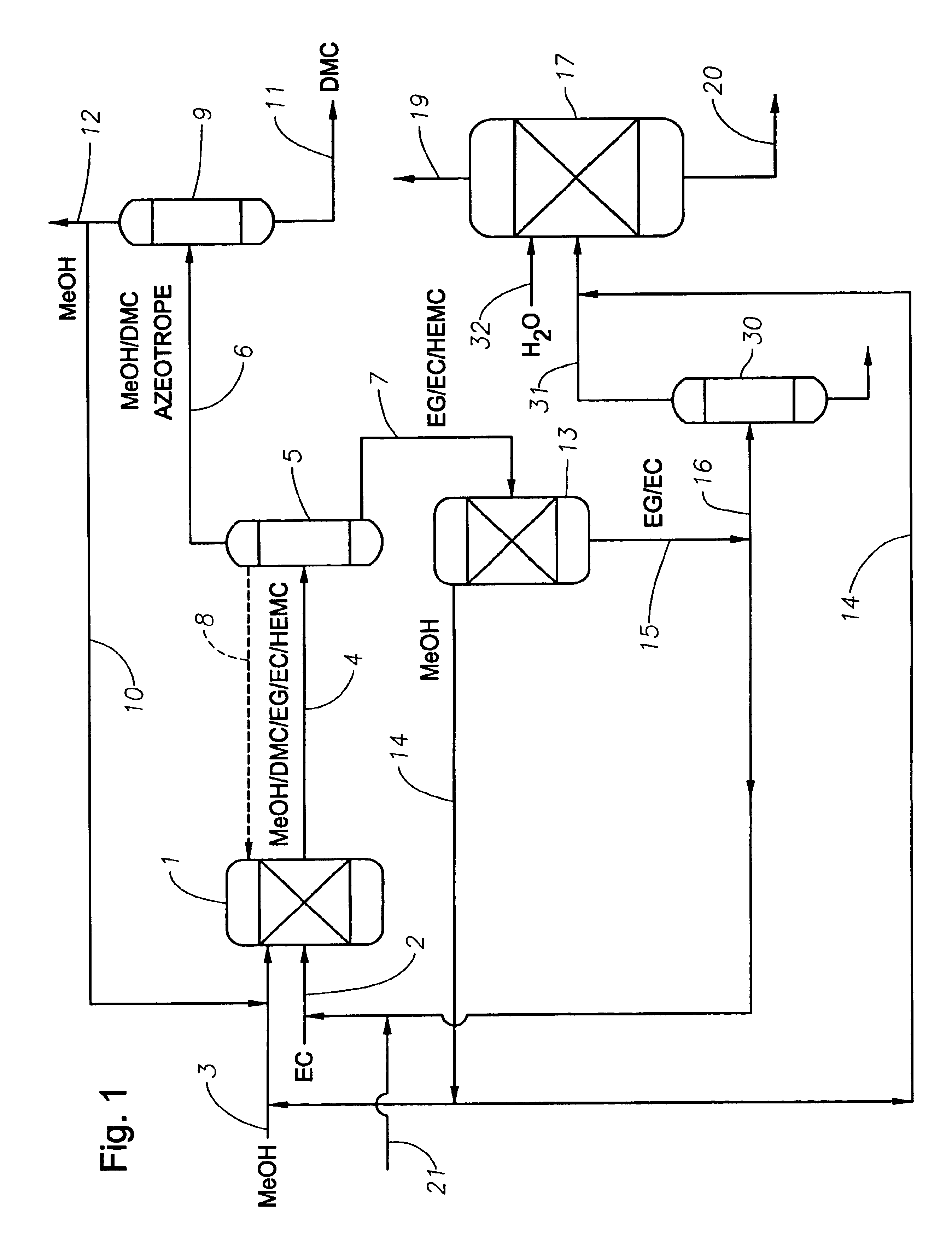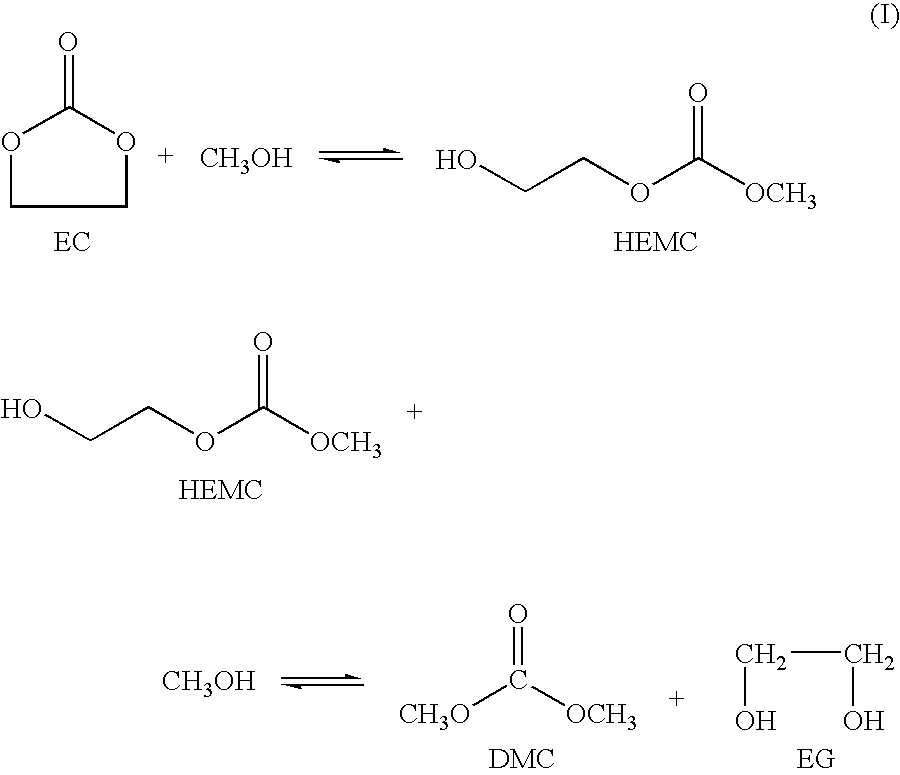Process for the production of unsymmetric and/or symmetric dialkyl carbonates and diols
a dialkyl carbonate and diol technology, applied in the preparation of carbonic/haloformic acid esters, chemical instruments and processes, organic chemistry, etc., can solve the problems of reducing the yield of dialkyl carbonates and diols from and reducing the yield of cyclic carbonates and aliphatic carbonates. , to achieve the effect of higher
- Summary
- Abstract
- Description
- Claims
- Application Information
AI Technical Summary
Benefits of technology
Problems solved by technology
Method used
Image
Examples
example 1
[0057]Dimethyl carbonate (DMC) and ethylene glycol (EG) were prepared in the presence of a MgO heterogeneous catalyst. The MgO catalyst was utilized in a fixed-bed catalytic experiment as follows: 2 grams of an industrial prepared MgO material was loaded into a ⅜″ tubular stainless steel reactor. The physical properties and composition of the MgO material are summarized in Table 1 below.
[0058]
TABLE 1Physical Properties of MgO catalystAsh,Bet surfaceAl,Fe,Na,Ca,wt %Area m2 / gppmppmppmwt %95.71452806805400.64
[0059]A feed was prepared, Feed 1, containing 54.9 wt % methanol (MeOH), 3.2 wt % ethylene glycol (EG), 10.9 wt % 2-hydroxyethyl methyl carbonate (HEMC), 30.7 wt % ethylene carbonate (EC) and 0.2 wt % other. The composition of Feed 1 is also shown below in Tables 2 and 3 in wt % and mole %, respectively.
[0060]Feed 1 was passed over the MgO catalyst at a pressure of 100 psig, a temperature of 200° F. and a LHSV of 1 hr−1. The experiment was repeated, but at a temperature of 250° F.
[...
example 2
[0062]A feed was prepared, Feed 2, containing 56.6 wt % MeOH, 3.3 wt % EG, 0.0 wt % HEMC, 39.9 wt % EC and 0.2 wt % other. The composition of Feed 2 is also shown below in Table 2 and 3 in wt % and mole %, respectively.
[0063]Example 1 was repeated, using Feed 2 instead of Feed 1. The results at each temperature for Feed 2 are shown in Table 4 below.
example 3
[0064]A feed was prepared, Feed 3, containing 39.8 wt % MeOH, 4.3 wt % EG, 14.5 wt % HEMC, 41.0 wt % EC and 0.3 wt % other. The composition of Feed 3 is also shown below in Tables 2 and 3 in wt % and mole %, respectively.
[0065]Example 1 was repeated, using Feed 3 instead of Feed 1. The results at each temperature for Feed 3 are shown in Table 5 below.
PUM
| Property | Measurement | Unit |
|---|---|---|
| pressure | aaaaa | aaaaa |
| temperature | aaaaa | aaaaa |
| temperature | aaaaa | aaaaa |
Abstract
Description
Claims
Application Information
 Login to View More
Login to View More - R&D
- Intellectual Property
- Life Sciences
- Materials
- Tech Scout
- Unparalleled Data Quality
- Higher Quality Content
- 60% Fewer Hallucinations
Browse by: Latest US Patents, China's latest patents, Technical Efficacy Thesaurus, Application Domain, Technology Topic, Popular Technical Reports.
© 2025 PatSnap. All rights reserved.Legal|Privacy policy|Modern Slavery Act Transparency Statement|Sitemap|About US| Contact US: help@patsnap.com



